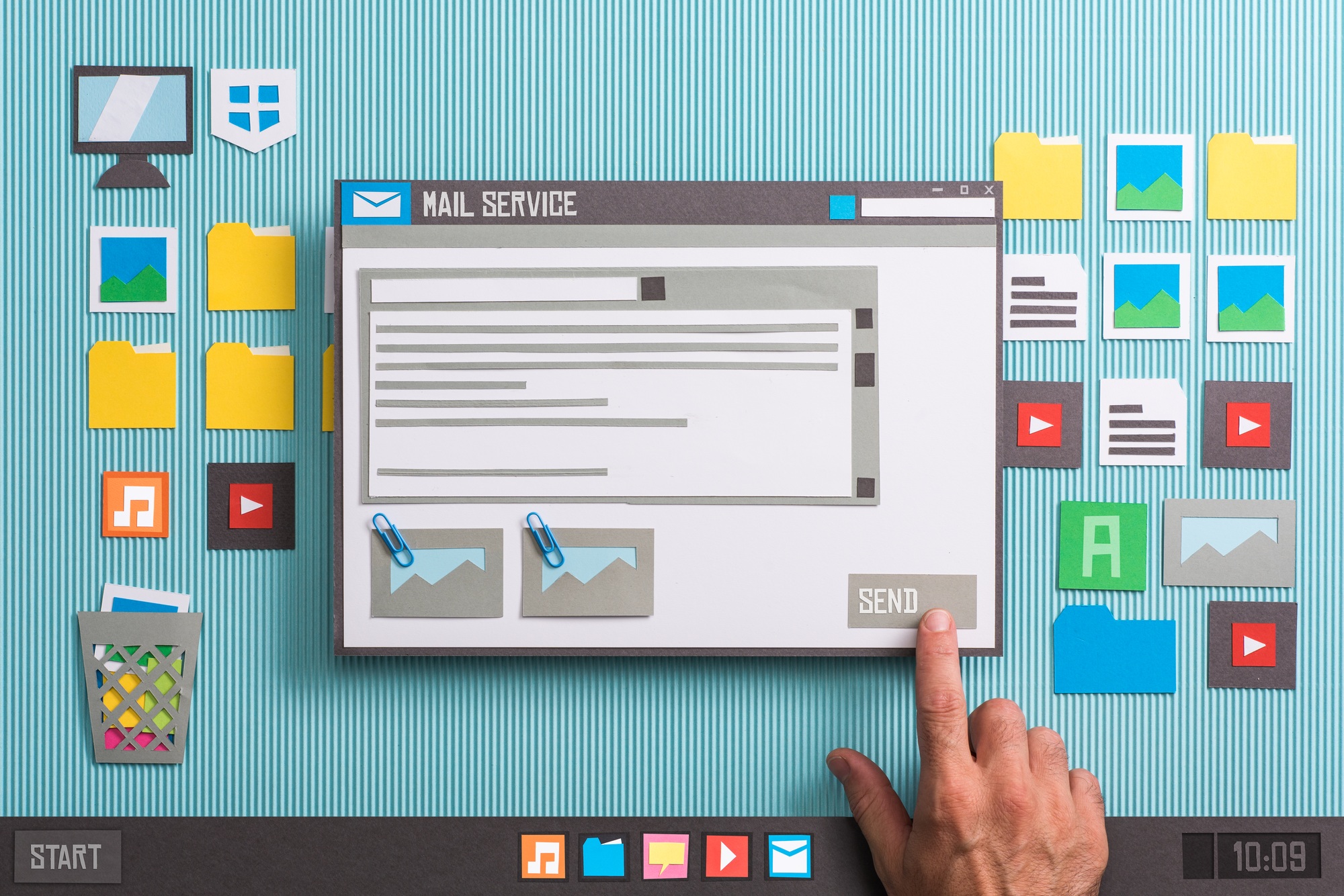Key Takeaways
- Mastering Email Etiquette: Understanding email etiquette is crucial for effective communication, especially in a professional environment, as it reflects commitment to clear and respectful interactions.
- Importance of Subject Lines: Crafting clear and compelling subject lines increases the chances of your emails being read and establishes professionalism, making your messages more impactful.
- Appropriate Tone and Style: Adjusting your writing style and tone according to the recipient’s preferences and your relationship with them is essential to maintain professionalism and effective communication.
- Conciseness is Key: Keeping emails concise and to the point ensures recipients grasp essential information quickly, enhancing the overall effectiveness of your communication.
- Effective Formatting: Proper email formatting, including the use of paragraphs and bullet points, improves readability and professionalism, making it easier for recipients to engage with your content.
In today’s fast-paced digital world, mastering email etiquette is essential for effective communication. Whether you’re reaching out to a colleague or corresponding with a client, the way you present yourself in an email can make a lasting impression. You want your messages to be clear, professional, and respectful, reflecting your commitment to good communication.
Understanding the nuances of email etiquette can help you navigate various situations with confidence. From crafting a compelling subject line to using the right tone, each detail matters. By honing your email skills, you can enhance your professional relationships and ensure your messages are received positively. Let’s dive into the key principles of email etiquette that will elevate your communication game.
Understanding Email Etiquette

You know email etiquette plays a vital role in your communication strategies, especially when running a small business. Adhering to proper email standards helps maintain professionalism and fosters better relationships with clients and partners.
Importance of Email Etiquette
Email etiquette directly impacts your small business’s reputation. Crafting clear, concise messages projects professionalism and builds trust with recipients. Observing etiquette can increase response rates and enhance collaboration, making it crucial for successful business operations. A well-structured email signals respect for the recipient’s time, making your communication more effective.
Common Email Mistakes
Avoid common email mistakes to maintain professionalism in your messaging. Key errors include:
- Neglecting Subject Lines: Failing to use compelling subject lines can lead to missed opportunities. Use concise phrases that summarize the email’s purpose.
- Inappropriate Tone: Using an overly casual or harsh tone can alienate recipients. Adjust your tone based on your audience to ensure appropriate communication.
- Ignoring Proofreading: Typos or grammatical errors can harm your credibility. Always proofread to maintain a polished appearance.
- Overlooking the Recipient’s Preferences: Not considering how your recipient prefers to be addressed can cause misunderstandings. Tailor your salutation and sign-off according to their established preferences.
By recognizing these mistakes and understanding the importance of email etiquette, you create a more effective communication environment that benefits your small business’s growth and relationships.
Key Principles of Email Etiquette

Mastering email etiquette is essential for running a small business effectively. Proper email practices enhance your communication, build professional relationships, and reflect positively on your brand.
Clear Subject Lines
Clear subject lines significantly enhance your email’s effectiveness. Aim for brevity while ensuring they convey relevant information. Action-oriented subject lines capture attention and inform recipients about the email’s purpose. For instance, instead of using a vague subject like “Meeting,” opt for “Project X Strategy Meeting – Agenda & Timing for April 5th.” Such clarity reduces the chances of your email being ignored and boosts your professionalism.
Professional Greetings and Closings
Professional greetings and closings set the tone for your email. Choose your greeting based on your relationship with the recipient and the email’s context. Use formal greetings like “Dear Ms./Mrs./Mr. ” for new contacts or formal correspondence. This approach establishes respect and professionalism. Similarly, a courteous closing such as “Best regards” or “Sincerely” leaves a positive impression, reinforcing your commitment to clear and respectful communication, crucial for a small business’s success.
Writing Style and Tone

Writing style and tone play a crucial role in email etiquette, especially for small businesses. Choosing the right tone affects how recipients perceive your professionalism and can significantly impact your business relationships.
Formal vs. Informal Emails
Formal emails are necessary when communicating with clients, managers, or anyone in a higher authority position. Maintain a professional tone and avoid abbreviations, contractions, slang, and emojis. A well-structured email includes all necessary details clearly. For example, if emailing a potential client, use a formal salutation like “Dear [Name]” and end with “Sincerely” or “Best regards”.
Informal emails are suitable for close coworkers or friends. You can adopt a conversational tone, using contractions and emojis to create a friendly atmosphere. For instance, starting with “Hi [Name]” is acceptable, and a casual closing like “Cheers” is appropriate for familiar contacts.
The Role of Conciseness
Conciseness is vital in email communication, especially when running a small business. Emails should provide essential information without unnecessary details. Aim for short sentences that get to the point, which helps maintain the recipient’s attention. For instance, summarize key points in bullet form to enhance readability and clarity.
By adopting the right tone and maintaining conciseness, your emails can contribute to clearer communication, strengthening relationships with clients and collaborators in your small business.
Email Formatting Tips

Effective email formatting enhances clarity and professionalism, vital for running a small business. Proper structure not only helps convey your message but also leaves a positive impression on recipients.
Use of Paragraphs and Bullet Points
- Format your email like a business letter. Include double-spaces between paragraphs with no indentation, except for quoted text. This clean layout improves readability.
- Keep your email body concise and organized. Use paragraphs to separate different ideas and maintain a logical flow.
- Utilize bullet points and numbered lists. These elements help structure your writing, particularly when presenting multiple points or detailed information. Bullet points make emails easier to scan and understand, which is essential for busy professionals in a small business context.
Proper Font and Size
- Choose standard, web-safe fonts such as Arial, Calibri, or Times New Roman. These fonts ensure your email appears properly formatted on various devices.
- Maintain a font size between 10 and 12 points for optimal readability. This consideration involves balancing professionalism and accessibility for all recipients.
Conclusion
Mastering email etiquette is essential for your professional success. By applying the principles discussed, you can enhance your communication and build stronger relationships. Remember that every email reflects your professionalism and attention to detail.
Being mindful of your subject lines greetings and tone can make a significant difference in how your messages are received. Prioritizing clarity and conciseness not only respects your recipient’s time but also fosters a more effective dialogue.
As you implement these strategies you’ll likely notice improvements in collaboration and trust within your business. Embrace these practices and watch your email communication transform into a powerful tool for growth and connection.
Frequently Asked Questions

Why is email etiquette important for small businesses?
Email etiquette is crucial for small businesses as it influences professional relationships and their overall reputation. Clear and respectful messaging fosters trust and enhances collaboration, which can lead to business growth.
What are common email mistakes to avoid?
Common email mistakes include neglecting subject lines, using inappropriate tones, failing to proofread, and overlooking the recipient’s preferences. Avoiding these pitfalls helps create a more effective communication environment.
How can I create compelling subject lines?
To craft compelling subject lines, ensure they are clear, concise, and action-oriented. This approach captures attention and reduces the likelihood of your email being ignored.
What type of greeting should I use in emails?
The greeting should reflect your relationship with the recipient and the email context. Use formal greetings for clients and superiors, while informal greetings are more suitable for close coworkers.
Why is conciseness important in emails?
Conciseness is key in emails because it provides essential information without unnecessary details. This helps maintain the recipient’s attention and improves the clarity of your message.
How should I format my emails?
Format emails like business letters, using double spaces between paragraphs and avoiding indentation. Use paragraphs for separating ideas and bullet points or numbered lists for easy scanning.
What font should I use in emails?
Use standard, web-safe fonts like Arial or Calibri, and keep the font size between 10 and 12 points. This choice enhances readability and professionalism in your emails.
Image Via Envato: StudioVK, iLixe48, msvyatkovska, nd3000, stokkete, zamrznutitonovi, sitthiphong



